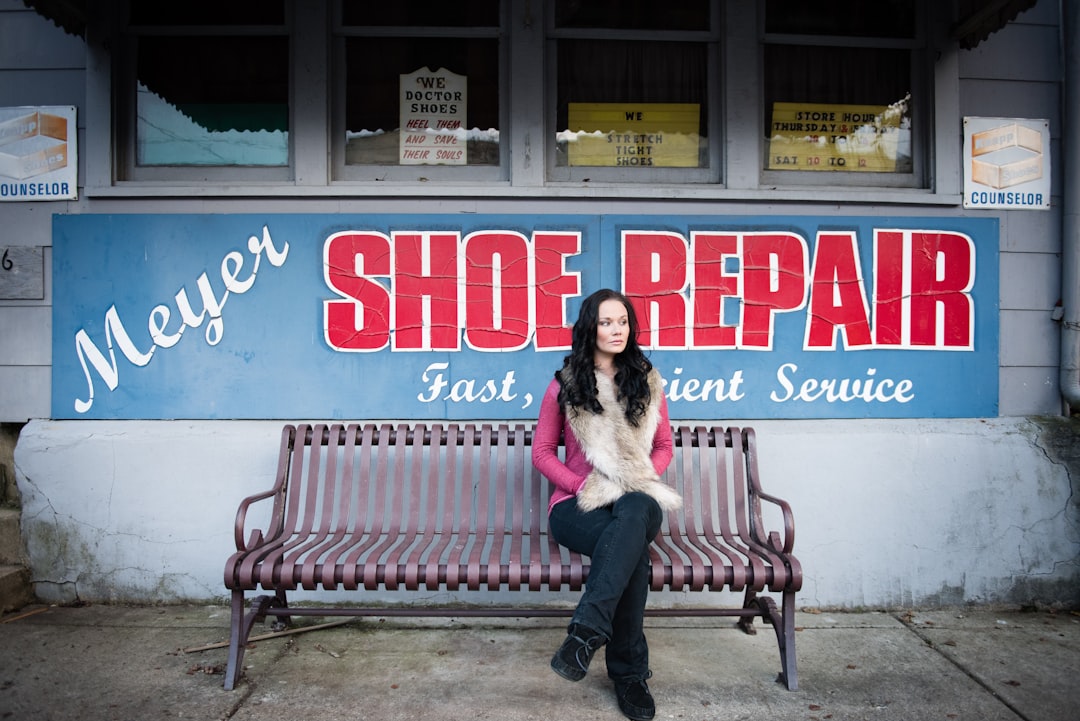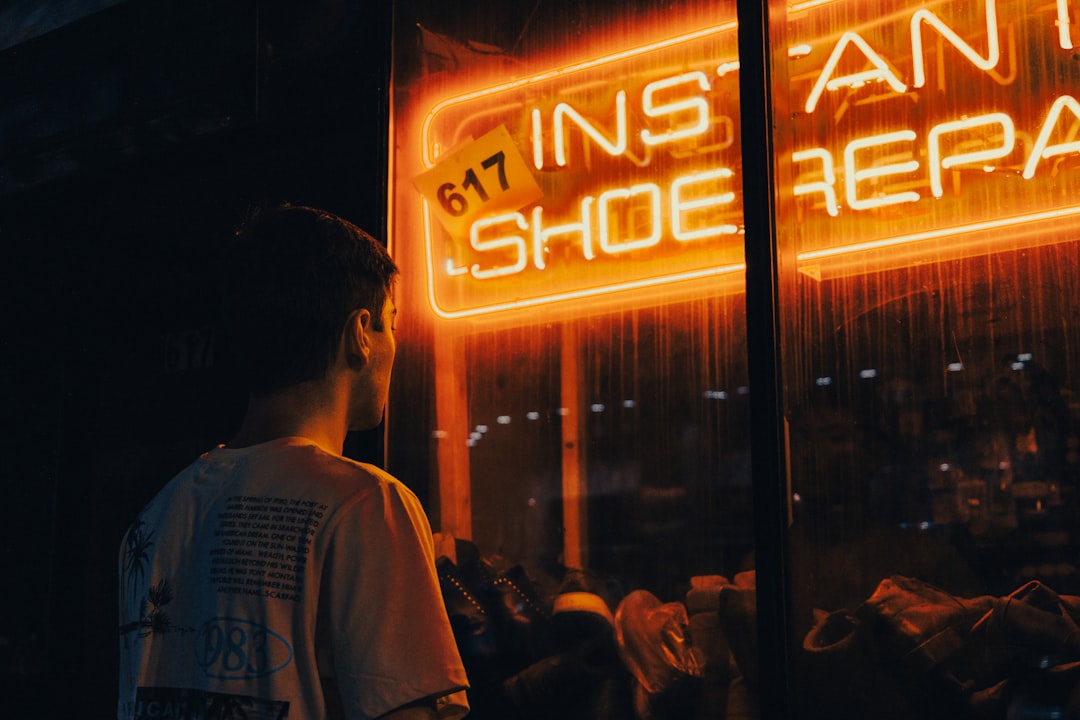

Engage prospects with a scan and streamline customer engagement with FREE QR code marketing tools by Sona – no strings attached!
Create a Free QR CodeFree consultation

No commitment

Engage prospects with a scan and streamline customer engagement with FREE QR code marketing tools by Sona – no strings attached!
Create a Free QR CodeFree consultation

No commitment
Today, shoe repair shops face challenges such as attracting and converting foot traffic, standing out in a crowded local market, and bridging the gap between physical services and digital customer expectations. Many shops lose high-value prospects because there is no seamless way to capture or follow up with customers who visit or inquire but do not commit on the spot. The problem is compounded by missing data on which interactions convert to actual business, which makes it difficult to allocate marketing spend with confidence. See Sona revenue attribution for more information.
QR codes have emerged as a strategic solution for shop owners, offering a simple and effective way to connect analog touchpoints like signage and receipts to valuable digital actions such as bookings, reviews, and payments. By leveraging QR codes, shop operators can modernize time-consuming processes, access data on customer behavior, and guide prospects from initial inquiry to loyal customer status, all while resolving the common pain of lost or incomplete customer records. Even better, QR codes do not require an app download, which keeps the journey fast and accessible for every customer.
This guide explains how shoe repair shops can use QR codes to streamline operations, win more business, and deliver a seamless conversion-focused customer journey both online and offline. With the right placements and calls to action, such as those in Sona QR use cases, every interaction in person or via printed materials can be tracked, measured, and nurtured for continuous growth. The result is a practical, data-informed approach to improving bookings, reviews, and repeat revenue without heavy technology investments.

QR codes unlock new conversion pathways for shoe repair shops by digitizing legacy workflows such as paper loyalty cards, printed appointment reminders, or static service menus. These manual processes often result in lost customer details, missed follow-ups, or opportunities that slip through the cracks, especially when walk-ins do not commit or paper tickets get lost. Replacing these analog processes with QR-enabled flows creates a trackable funnel that captures more intent and converts more inquiries into revenue.
Start by mapping your current drop-off points. Where do prospects pause, leave, or forget to follow up? Typical problem areas include quoting, scheduling, repair status, and review requests. Introducing QR codes at these moments gives people a fast way to act and gives your team the data required to follow up. When paired with a centralized QR platform, such as the Sona QR product overview, every scan becomes a data point that fuels optimization, personalization, and a stronger return on investment.
By upgrading from manual logs and disconnected print materials to QR-enabled workflows, you can spot intent earlier and engage it more effectively. This approach helps you capture more leads, personalize follow-up, and drive consistent improvements across the customer journey without increasing staff workload.
Consider the process of registering walk-in repairs. Many shops still rely on paper forms or handwritten tickets that are easy to misplace or misread. A simple QR code at the counter can launch a mobile Google Forms QR intake form, allowing customers to enter their contact information, service needs, and consent for updates in seconds. The form can also capture photos of the shoes and desired outcomes, which improves clarity and reduces back-and-forth.
Once submitted, the intake triggers automated confirmations, optional quotes, and status updates. If someone leaves before accepting a quote, QR for SMS follow-up reminders can be scheduled. You can also route scans into segments for later marketing: for example, “heel replacement interest,” “polish and clean,” or “sole repair.” This creates a richer, more reliable pipeline of high-intent prospects and makes your future outreach timely and relevant.

QR codes help shoe repair shops eradicate common friction points such as missing customer feedback, low conversion from walk-ins, and unpredictable appointment flow. Shops routinely struggle to identify which visitors are genuinely interested, especially when people browse, ask a question, or pick up a flyer without leaving their details. QR codes replace these dead ends with instant actions, so your team can capture intent and keep the conversation going.
Integrating Sona QR across receipts, repair tags, flyers, packaging, and point-of-sale displays turns static touchpoints into dynamic gateways. Owners gain visibility into who scanned, when they scanned, and what action they took. Customers enjoy a fast way to view services, request quotes, join loyalty programs, or leave reviews. Meanwhile, campaigns can be updated on the fly using dynamic QR codes without new print runs. See dynamic QR for retail.
For example, a QR code on a pickup receipt can route satisfied customers to a Google reviews QR flow, turning a completed job into public proof of quality. Another code on a window cling can open a “shoe repair cost estimator,” capturing passerby interest that would otherwise be missed.

Shoe repair shops benefit most from formats that simplify booking, communication, and education. The right format reduces steps and aligns with what the customer wants to do in that moment, such as request a quote, check a status, or learn about services. See shoe QR examples.
Using dynamic codes provides agility and precise measurement when traditional print tracking fails. For instance, a neighborhood flyer featuring a QR code to a live booking calendar ensures prospects never land on an outdated page and allows you to monitor which neighborhoods or placements generate the most intent.

Growth comes from placing QR codes where intent is visible but often unrecorded. Focus on high-traffic surfaces and materials that customers see during their decision-making moments. Your goal is to turn everyday interactions into trackable engagement and action.
Prioritize intersections where people are ready to act but lack a clear next step. Look for patterns such as repeated questions at the counter, frequent phone inquiries that could be handled by a form, or a lack of reviews despite high satisfaction. Place QR codes strategically to channel that interest into a booking, a sign-up, or a review.
Deployed thoughtfully, these placements transform offline moments into digital, trackable growth drivers. Every visit, pickup, or passerby glance can become an opportunity to convert interest, collect feedback, and nurture loyalty.

Use cases should reflect common customer interactions and the outcomes you want to achieve. Start with three core flows and expand as you learn what works best for your market and foot traffic patterns.
Each use case turns a fleeting, analog moment into a data-rich touchpoint. They also reveal content preferences, such as which services and guides get the most engagement, which you can use to refine pricing, promotions, and staffing.
Every scan signals intent and provides context that is usually missing from offline interactions. With multiple QR codes deployed across your shop and local marketing, you can segment audiences automatically and follow up based on what people want, where they engaged, and when.
Define audience segments that match your customer lifecycle. For example, “window shoppers scanning cost estimates,” “active customers scanning status updates,” and “post-service customers scanning review requests.” Tailored follow-up, like a limited-time discount or a care reminder, will outperform broad messages every time.
Someone who scans a “shoe repair cost” code on a community flyer likely has near-term intent. Send them a limited-time quote, a booking link, and a reminder if they do not convert. Meanwhile, customers who scan a review request code are primed for loyalty offers and referral programs. This segmentation solves the problem of anonymous foot traffic and makes each follow-up timely and relevant.
QR codes connect your offline presence with your digital ecosystem, making every printed or physical asset actionable and measurable. When managed centrally, they also provide a consistent brand experience across channels, which increases trust and conversion rates. Explore Sona QR retail for placement ideas and measurement tips.
Align QR destinations with your campaign goals. For example, if your objective is to boost weekday bookings, point window and A-frame QR codes to a calendar with off-peak specials. If you want more reviews, put a QR code on pickup tickets that routes to a streamlined review capture page. The clearer the goal, the stronger the outcome.
Manage QR codes from a single platform to compare performance across channels. This helps you allocate budget and staff time to the placements that reliably produce bookings and reviews, instead of relying on guesswork or anecdotal feedback.
Identify the conversion gap you want to close first. Common goals include increasing bookings from walk-ins, collecting more online reviews, or reducing no-shows with automated reminders. Map that goal to a specific QR action such as “Scan to book” or “Scan to confirm appointment,” and define success metrics like conversion rate, review volume, or show-up rate.
Make the use case concrete and relevant to your environment. For a shoe repair shop, a high-impact starting point is a counter QR code that launches a quick quote form. Another strong option is a review QR code printed on pickup receipts, which captures happy customers at the exact moment satisfaction is highest.
Choose static QR codes for destinations that will never change, such as a permanent aftercare guide. Choose dynamic QR codes for campaigns that require tracking, A/B testing, or frequent updates, such as seasonal offers or rotating promotions. Dynamic codes make it easy to tweak destinations without reprinting.
If you want data, retargeting, or future flexibility, go dynamic. Dynamic codes help you attribute scans by channel, run experiments on landing pages, and adjust CTAs by performance. Over time, these insights often produce meaningful lifts in conversion and lower cost per acquisition.
Design QR visuals with clarity and urgency. Add a short, benefit-focused CTA near the code, such as “Scan for instant quote” or “Scan to book in 60 seconds.” Include your logo and brand colors to signal trust, but maintain high contrast between the code and background for readability.
Test scannability in real-world conditions before printing at scale. Check performance across devices, at different angles and distances, and under varied lighting, such as bright storefront windows or dim counters. Make sure the landing page loads quickly on mobile and that any forms auto-fill where possible.
Start with placements tied to your primary goal. If you want more bookings, add QR codes to window graphics, A-frames, and service counters. If you want more reviews, place them on receipts and pickup bags. If your objective is faster intake, put an intake QR code at the counter and near the door.
Roll out in phases and monitor early results. Launch in the shop first, learn what converts, then extend to direct mail, community flyers, or local event booths. Each new placement should support a specific stage of the buyer journey and feed data back to your central dashboard.
Measure each scan by time, device, and source, then connect scans to downstream outcomes like bookings, payments, and reviews. Use analytics to identify which placements and CTAs perform best and which ones need improvement. Small changes in copy, size, or placement often create noticeable lifts.
Run A/B tests on destinations and language. For example, compare “Scan for quote” versus “Scan to save 10 percent on repairs” and see which produces more completed bookings. Use insights to refine creative, reallocate budget, and prioritize the channels with the highest yield.
Shoe repair shop owners often lack end-to-end visibility between physical marketing and customer actions, which leads to missed opportunities and inefficient spending. QR codes solve the first half of the problem by making interactions measurable. The second half is connecting those scans to revenue outcomes like bookings, upsells, and reviews.
With complete scan-to-sale attribution, you can finally see which printed assets and placements influence real business results. Track scans by channel, monitor conversion behavior, and identify where people drop off. Use these insights to shift investment toward the highest-performing creative, locations, and offers.
Modern QR platforms make it straightforward to aggregate insights, compare channels, and attribute outcomes. If you want to go further, tools like Sona QR and Sona.com help unify QR scans with website visits, ad clicks, email engagement, and CRM activity to build a complete picture of the journey from first touch to purchase.
As your program matures, refine your approach with practices that maximize scan rates, data quality, and downstream conversions. Focus on tips that match your most common media and customer behaviors.
Creative deployments add momentum over time. Consider a digital punch card accessed via QR on a loyalty sticker or a QR on invoices that unlocks a discount on the next repair. Start creating QR codes for free with Sona QR, then connect scan activity to your CRM and ads as you scale.
For shoe repair shops, QR codes make it easy to convert physical moments into measurable action. They give customers instant access to quotes, bookings, reviews, and care guides, while giving owners reliable data about what drives demand. When every flyer, receipt, and service tag becomes a gateway to action, lost leads turn into repeat business and referrals.
The shops that embrace QR codes do more than modernize. They build a conversion-centric culture that connects offline and online experiences, captures intent at the source, and optimizes every step with real data. By pairing thoughtful placements and clear calls to action with analytics and CRM integrations, you can close data gaps, nurture prospects into loyal customers, and create a stable foundation for long-term growth.
QR codes have transformed shoe repair shops from simple service providers into smart, customer-centric businesses. By integrating QR codes, you can effortlessly drive customer acquisition, enhance service experiences, and track customer interactions—all while streamlining appointment bookings, showcasing repair options, and sharing promotions instantly. Imagine knowing exactly which repair offers attract the most customers and being able to update your campaigns on the fly without reprinting signs or flyers.
With Sona QR, creating dynamic, trackable QR codes tailored to your shoe repair shop is fast and easy. Instantly connect every scan to real business outcomes, update campaigns in real time, and gain valuable insights that help you grow your customer base and boost revenue. No more guesswork—just clear, actionable data that turns casual browsers into loyal clients.
Start for free with Sona QR today and step confidently into a future where every scan leads to repairs, repeat business, and measurable growth.
Look for local shops that use modern tools like QR codes for easy booking, transparent pricing, and customer reviews to ensure reliable service.
Shoe repair shops commonly offer services such as heel replacement, sole repair, polishing, cleaning, and aftercare guidance.
Costs vary by service and shop, but many shoe repair shops provide instant quotes through QR codes or direct inquiries for accurate pricing.
Typically, you register your repair details either in person or digitally via QR code intake forms, receive a quote, approve the repair, and then pick up your shoes when completed.
Yes, some shops use QR codes to allow customers to receive real-time status updates and automated notifications about their repair progress.
QR codes streamline processes like booking, quoting, intake forms, and review requests, making interactions faster, trackable, and more convenient without app downloads.
They are often placed on appointment cards, receipts, counters, window clings, flyers, packaging, and direct mail to capture customer intent and encourage actions.
Dynamic QR codes are preferred for campaigns needing tracking and updates, while static codes suit permanent info like aftercare guides.
By placing QR codes on pickup receipts or packaging that link directly to review platforms, shops can encourage satisfied customers to leave feedback easily.
Tracking provides data on customer behavior, effective marketing placements, and conversion rates, enabling shops to optimize campaigns and improve ROI.
Yes, QR scan data can sync with CRMs like HubSpot or Salesforce to automate follow-ups, segment audiences, and personalize marketing efforts.
Challenges include lost customer leads, missed follow-ups, inefficient marketing spend, and poor visibility into which interactions convert to sales.
Success is measured by metrics such as scan volume, conversion rates, repeat bookings, review counts, and reduced friction in customer interactions.
They should identify conversion gaps, choose appropriate QR code types, design clear CTAs, deploy on high-impact materials, and track performance for optimization.
By offering digital punch cards, referral incentives, and easy access to aftercare info through QR codes, shops can encourage repeat business and referrals.
Use Sona QR's trackable codes to improve customer acquisition and engagement today.
Create Your FREE Trackable QR Code in SecondsJoin results-focused teams combining Sona Platform automation with advanced Google Ads strategies to scale lead generation

Connect your existing CRM

Free Account Enrichment

No setup fees
No commitment required

Free consultation

Get a custom Google Ads roadmap for your business






Launch campaigns that generate qualified leads in 30 days or less.
